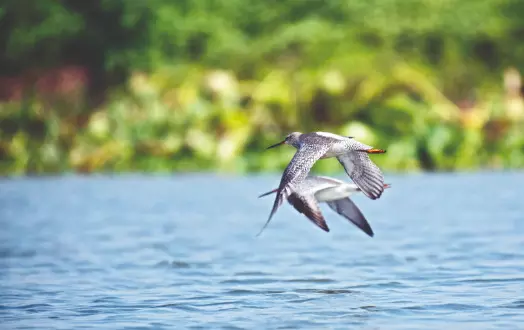
BALURGHAT, Nov. 25 -- With only a few days left in the last week of November, the presence of migratory birds in South Dinajpur remains unexpectedly low this year. Bird watchers across the district say the arrival of winter visitors is far below the usual numbers, triggering concern among nature enthusiasts.
South Dinajpur is dotted with ponds, lakes and wetlands that typically attract large flocks of migratory birds during the monsoon and winter months. Every year, these sites draw bird lovers from across the region. In January this year, the state Forest department conducted a bird census, locating nearly 40,000 migratory birds in the Balurghat subdivision alone.
According to private estimates, around three lakh migratory birds usually arrive in the district's waterbodies, including Matas, Malancha, Bhaluka, Kaldighi, Altadighi, Malyan and Mahipal, between late October and January.
However, the unusually low bird presence during the monsoon had already worried local enthusiasts, who hoped numbers would rise in winter. With November drawing to a close and little improvement in sight, their concerns have deepened. Among all sites, only Tapan Dighi has recorded a comparatively higher number of birds so far.
Over the past few years, species such as Little Cormorant, Little Grebe, Grey Heron, Indian Pond Heron, Cattle Egret, Yellow Bittern, Asian Openbill Stork, Green Sandpiper, Common Kingfisher, Stork-billed Kingfisher, Black Kite, Green Bee-eater and River Lapwing have been recorded in large numbers. These birds generally travel to the district for breeding.
Balurghat-based bird expert Suman Ghosh explained the possible reasons behind the decline. "Several factors may be responsible for the reduced arrival of migratory birds this year, even as November ends. These include illegal sand mining, demographic changes, habitat destruction, monotype plantation, lack of natural forests or fruit-bearing trees, global warming and climatic changes," he said.
Bird enthusiast Tuhin Shubhra Mondal echoed similar concerns. "The environment has become too polluted for birds to consider these areas safe. To boost fish production, excessive chemicals are being used in ponds and many are fenced with nets, causing water pollution. Trees around water bodies are also being cut down, which reduces food availability. Migratory birds usually start coming in from November. We are now hoping for an improvement in December," he said.
Balurghat Forest department Range Officer Tapas Kundu added: "Last year we recorded a healthy arrival of birds. But this year, due to the lack of adequate winter chill, their movement has not yet begun."
Published by HT Digital Content Services with permission from Millennium Post.
